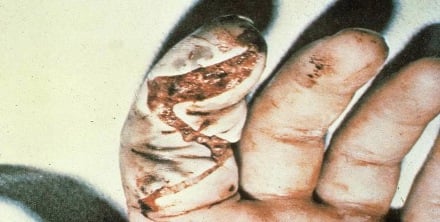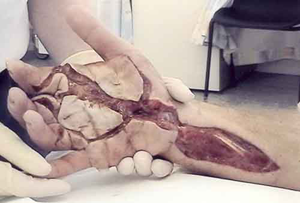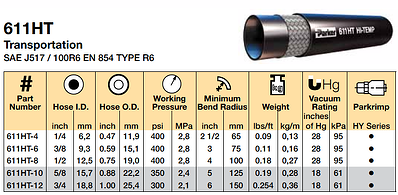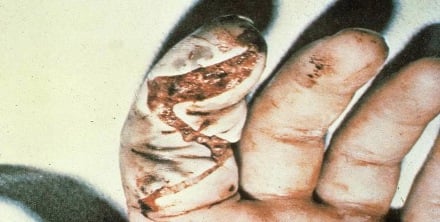
Table of Contents
A hydraulic fluid injection is perhaps the most dangerous injury from a hydraulic hose failure. One reason is that it can appear benign at the beginning so it often gets dismissed as not urgent and medical care is postponed. Another reason is that injected hydraulic oils are highly toxic - so in addition to a physical cut or stab, they poison you.
The most important things to remember: NEVER touch a pressurized hose with your hand and if you suspect an injection injury has occurred, get to an emergency room right away!
Take the safety data sheet (SDS) of the injected liquid with you to the emergency room. Inform the medical staff that you have suffered a hydraulic oil injection injury when you arrive. Have someone find out as much as possible about the hydraulic system pressure and estimated velocity of the pinhole leak that caused the injury and report the findings to the medical staff.
The longer the period before treatment, the more risk you are taking. At first, injections may feel like a bee sting or wire prick and the entry area may look like just a pinprick. Do not let this fool you. The size of the entry wound is a poor indicator of the seriousness of the injury. What looks like a simple puncture wound is in fact life threatening. The area around the injury typically turns red and swells within a couple of hours. Throbbing and numbness follow. If left untreated, the injury can lead to amputation and even death.
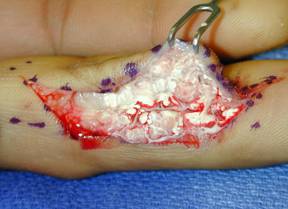 If you suspect an injection injury has occurred, seek medical attention immediately. Read a real life story of one of our customers who did not think his injection injury was serious.
If you suspect an injection injury has occurred, seek medical attention immediately. Read a real life story of one of our customers who did not think his injection injury was serious.
If you are still not convinced, learn more about injection injuries at http://www.fluidpowersafety.com/index.html. Fluid Power Safety Institute offers safety seminars and workshops and sells hydraulic safety videos. We relied on their expertise and ours to get the facts for this blog.
Related Posts:
- Be Prepared for the Event of Hydraulic Injection Injury
- True Story about Hydraulic Injection Injury
- 7 Most Common Crimping Mistakes
Posted by Joni Scott

